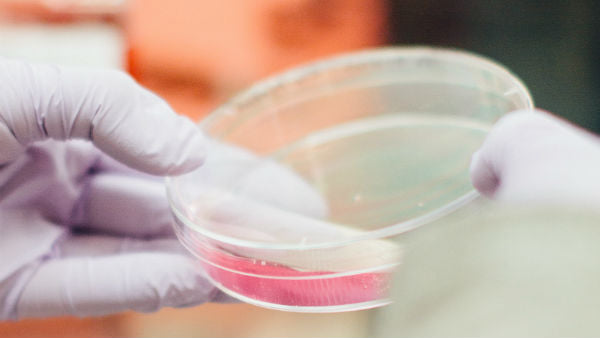
There are more bacteria in and on your body than there are the tissue cells. Let that sink in...
There are roughly 100,000 of the little fellas in every square inch of your skin.
If all of the bacteria on your body decided to up and leave, you’d lose about 30 grams in weight - you’d also probably die of an infection.
The bacteria that live on your skin inhabit a semi-harmonious world filled with yeasts and fungi called the microbiome. There are around 1000 species of bacteria, and we’re not being speciest, but they all pretty much look they same.
However, there are few groups that have very different impacts on our skin and our health. You can break it down like this:
Commensal: They just sit around on the skin eating our oils but not really harming or helping us. Staphylococcus epidermidis is an example, and the most common organism on our skin. However, so is Propionibacterium acnes which causes acne in some people while leaving most people alone.
Mutualistic: We depend on these bacteria, and they depend on us. They use us as somewhere to live - in turn protect us from other more hostile parasitic organisms keeping our skin nice barrier function nice and healthy.
Parasitistic: These bacteria hurt us while they grow fat on our sebum :). Staphylococcus aureus is one of these. It causes skin boils and folliculitis.
Pathogenic: Most bacteria, good and bad, can fall into this category if your skin barrier function is in a bad state. If it is weakened by cuts, scrapes, overwashing or overzealous pimple popping bacteria can get in and infect the site.
Imagine your body is a World (it is to them) parts of your body are barren deserts, the back of your hands for example, and parts are moist caverns - like your groin and nose. Different bacteria have acclimated to the different microclimates. Each may also seek out different levels of acidity.
Now we’ve got to know the little fellas, let’s understand a bit more deeply about why we need them and how we can keep them happy.
Good bacteria stop the bad bacteria and fungi getting onto and into our skin. They do this in two ways; one by just taking up space that these unhelpful organisms can inhabit and two by actually producing antimicrobial compound that kill off bad bacteria.
The other thing that commensal and mutualistic bacteria do is to stimulate the skin’s own immune system to produce antibodies that attack the bad guys.
There is even some evidence that a strain of bacteria could help prevent skin cancer. The same molecules that they use to ward off bad bacteria could also slow down the reproduction of cancerous cells.
So now we now what we have on us and why it’s a good thing it’s important to know what we can do to support the good bacteria.
The first thing to know is that the skin is slightly acidic. Bacteria like it this way so we must not use harsh alkaline bar soaps on our skin. Anything pH balanced ideally below 7 is great.
Avoid hot showers with lots of harsh foaming shower gels. These strip the skin of oil and it’s the oil that these little fellas eat.
Do moisturise the skin. Good bacteria thrive when the skin is moist.
Try adding a bacteria back onto the skin using one of the products from Mother Dirt or Aurelia. Or just smother Kefir all over.
Work up a sweat. Sweat bubbling up through your glands provides plentiful food for the little fellas.
So there you have it, a whirlwind guide to the glorious ecosystem that is planet you. You are you Gaia with a responsibility to live as one with your inhabitants. Be nice to them, and they’ll be nice to you.
Further reading
How bacteria help active skin defence mechanisms: https://www.the-scientist.com/?articles.view/articleNo/40228/title/Microbes-of-the-Skin/
Could bacteria protect against skin cancer: https://www.theguardian.com/science/2018/feb/28/common-human-skin-bacteria-could-protect-against-cancer-say-researchers
